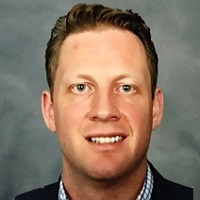 By Dan Ward, Vice President of Strategy, ZirMed
By Dan Ward, Vice President of Strategy, ZirMed
Twitter: @zirmed
In this era of razor-thin margins and rapid changes in reimbursement methods, it is imperative that healthcare organizations capture every charge representing the care provided. Further, they must ensure that those charges are properly billed so that they will be paid the dollars they have earned.
Unfortunately, as health systems turn to technology to address the surrounding challenges, some revenue integrity applications fail to identify many missed charges. What is more, these tools can also make the process of remedying any leakage harder than it has to be.
An effective revenue integrity solution makes it easy for a hospital or a healthcare system to prevent charge leakage. It also streamlines the process and reduces the amount of staff time required to perform this task.
Big dent in bottom line
According to the Healthcare Financial Management Association (HFMA), up to one percent of net charges are lost because of charge capture leakage. Among these errors are charges billed for services that differ from documentation, incompatible or even contradictory charges between institutional and professional claims, or services that were never charged for at all.
Collectively, these billing mistakes cost health systems millions of dollars a year in lost revenue—and that doesn’t include the cost of staff time to track down and close gaps in charge capture.
It is not surprising, therefore, that charge leakage topped the list of priorities in a recent HFMA survey of healthcare executives. Only 44% of the respondents, however, had implemented a revenue integrity program.
It’s clear that many institutions are still leaving money on the table because of poor billing controls. Others are trying to fix the problem but are using inadequate tools.
At Novant Health, a four-state integrated health network that includes 14 hospitals, various staff members spent up to 30 hours of their work week tracking down these errors.
This excessive amount of work resulted from the legacy revenue integrity software that Novant was using at the time. The tool churned out a significant amount of data, but it couldn’t produce the pattern and trend information that Novant needed to determine the root causes of its problems with charge capture. Consequently, the team members had to spend hours manually examining the data to spot the relevant trends.
False positives—errors generated by system rules that did not apply to Novant Health—were another major challenge. Approximately 70%-75% of the errors that the legacy system identified were false positives that were not in fact charging issues and did little more than create unnecessary work for the Novant team.
For example, Novant has a policy that an injection given in the OR should be billed as part of OR time rather than being captured as a separate charge. But the legacy software made it difficult to reflect this operational reality, so an error alert was generated each time there as evidence an injection had been performed without an accompanying charge – even though there should not have been a charge. As a result, every week a clinical team member had to review charges for hundreds of false positives grounded in this one issue alone.
Novant eventually recognized that it was making little headway in its effort to combat charge capture leakage. Following a market evaluation, the healthcare system chose a new revenue integrity solution that, unlike most of the other applications on the market, considered Novant Health’s unique charging practices.
The solution selected by Novant combined machine learning, predictive analytics and rules to improve the identification of missing charges. This tool enabled Novant to rebill $7.5 million in net revenue within a period of 15 months. It also reduced the costs of addressing revenue intergrity issues by eliminating false positives and streamlining workflows.
ZirMed auditors enabled the solution to improve its accuracy rate continuously as this team became more familiar with Novant’s unique charging policies. The application’s ability to aggregate the sources of missing charges across all hospitals also enabled Novant to see missing charge trends from multiple perspectives. This aspect of the solution enabled the Novant team to identify the root causes of specific errors. As a result, they were able to address the issues at the source, such as making workflow changes within their HIS, to prevent most similar mistakes from being repeated.
What is more, the incidence of false positives also dropped radically. With their previous solution, the team would typically review as many as 1,200 false positives a week. With the new application, Novant agreed with the missing charges more than 91% of the time.
Reconciliation of charge errors through Novant’s electronic health record is no longer a daily activity.
Charge capture leakage is a challenge for most healthcare systems, but there are methods that allow organizations to reduce it to the point of near elimination. New applications that consider each health system’s unique charging practices in addition to using machine learning, predictive analytics, and rules can help healthcare organizations identify and fix charge capture leakage. By providing the insights that enable revenue integrity teams to determine root causes, these tools can also prevent further leakage of revenue.
This article was originally published on ZirMed and is republished here with permission.
